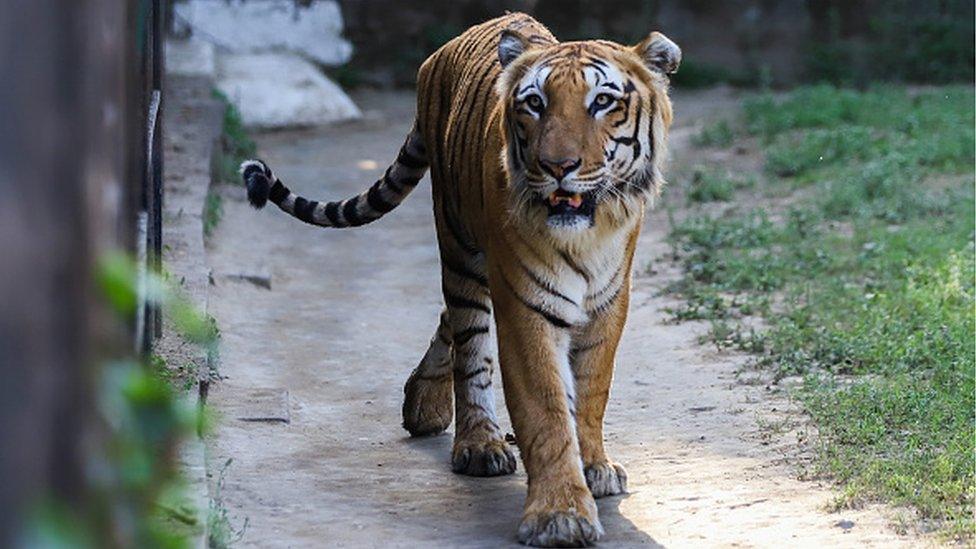Tiger census: India now has 3,167 tigers, numbers show
- Published

Since 2006, there has been a healthy uptick in tiger numbers
India is now home to 3,167 tigers, 200 more than it had four years ago, according to estimates from the latest tiger census.
Prime Minister Narendra Modi released the report on Sunday at an event to mark 50 years of the country's Project Tiger campaign.
India is estimated to have more than 70% of the world's tigers.
Mr Modi said India had "not only saved the tiger" but also given it "a great ecosystem in which to flourish".
Project Tiger was launched in 1973 by then Prime Minister Indira Gandhi after the animal's numbers became worryingly low.
Between 1875 and 1925 alone, some 80,000 tigers were killed in India, one estimate says. Bounty and sports hunting were rampant and by the 1960s, the number of tigers had dwindled precipitously.
But since then, a number of government initiatives - including a ban on hunting and awareness drives in villages - have been put in place to conserve the tiger, which is also India's national animal.
Laws were also strengthened to make it virtually illegal to kill or capture wild animals even when they were involved in conflict situations with humans.
Since 2006, there has been a healthy uptick in tiger numbers.
According to the 2022 report, the tiger population has increased substantially in the Shivalik and Gangetic flood plains in the north followed by central India, where tigers have entered new areas in the states of Madhya Pradesh and Maharashtra.
But the Western Ghats, a mountain range that runs along the western coast of India, showed a decline in tiger population.
The report also noted that the local tiger population had become extinct in several areas, including in some reserves, and warned that "serious conservation efforts" were required in states including Jharkhand and Andhra Pradesh.
It has also flagged several challenges, including the need to balance large-scale economic development with conservation and addressing human-animal conflict. Other problems include illegal wildlife trade and the impact of climate change on tiger habitats.
"The increase in the tiger population is a positive sign, but we must not become complacent and there is a need to continue our efforts to ensure the survival of this magnificent animal and safeguard our forested ecosystems in their entirety," it says.
BBC News India is now on YouTube. Click here, external to subscribe and watch our documentaries, explainers and features.

Read more India stories from the BBC:
